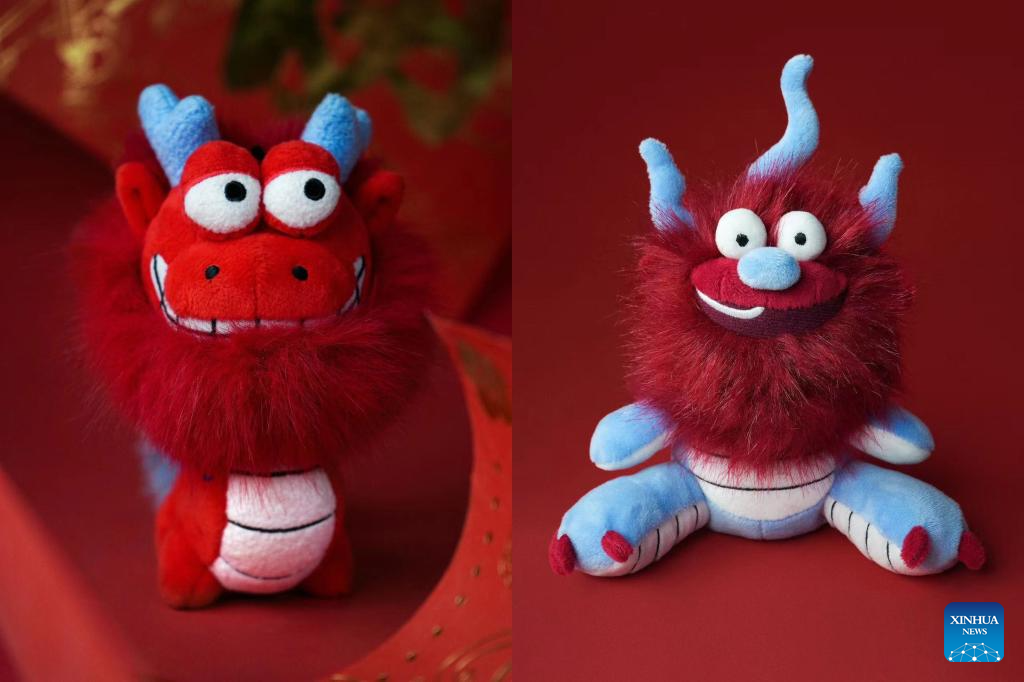
This undated combo photo provided by the Gansu Provincial Museum shows two creative cultural products sold at the souvenir shop of the Museum in Lanzhou, capital of northwest China's Gansu Province. (Gansu Provincial Museum/Handout via Xinhua)
LANZHOU, Feb. 11 (Xinhua) -- A plush toy named "Happy Loong" has recently captured the hearts of visitors to the Gansu Provincial Museum in northwest China.
Modeled after a Ming Dynasty (1368-1644) gold ornament in the shape of a loong, or Chinese dragon, over 1,000 of these chubby and grinning loong toys were sold in the first week after it made its debut earlier this year.
Wu Xiaoyu, a designer of the toy, said the museum's creative cultural product design team had aimed to create a more adorable and joyous version of the traditional loong to cater to the tastes of young people.
Established in 2015, the team consists of 12 young designers, with the youngest of them aged 24.
This innovative approach to museum souvenirs reflects a broader trend of making cultural products more appealing to young Chinese museum-goers, driving up revenue across various museums.
The Palace Museum's online store, for instance, offers playful and humorous souvenirs featuring emperors in Chinese history. These souvenirs range from lipsticks and fans to adhesive tape and wallets, and have received rave reviews from customers.
Similarly, the Liaoning Provincial Museum has developed nearly 300 types of cultural products, generating revenue of 14 million yuan (about 2 million U.S. dollars) in 2023.
According to Cui Youxin, head of the creative cultural product center at the Gansu Provincial Museum, the success of these innovative souvenirs lies in their ability to meet the demands of young people seeking relaxation and individuality.
However, Cui emphasized that creating truly ingenious cultural products requires an intimate knowledge of cultural relics and their historical background.
"Only those deeply rooted in the soil of Chinese history and culture can stand the test of time," she said.
In addition to "Happy Loong," the Gansu Provincial Museum offers stuffed toys inspired by the flying apsaras of the Mogao Grottoes and the bronze galloping horse from the Eastern Han Dynasty (25-220), all of which combine rich history with Gen-Z appeal.
Gao Yafang, head of the tourism college at Lanzhou University of Arts and Science, said that such souvenirs have the potential to stimulate young people's interest in cultural heritage and encourage them to preserve traditional culture.
Looking ahead, the museum souvenir market in China is expected to continue growing.
China's central economic work conference in December 2023 proposed that the country should actively develop new consumption growth points such as China-chic goods in 2024.
This presents abundant opportunities for designers like Wu.
"We will continue to do our best to develop innovative and satisfying products," she said. "We do this out of love and enthusiasm." ■



